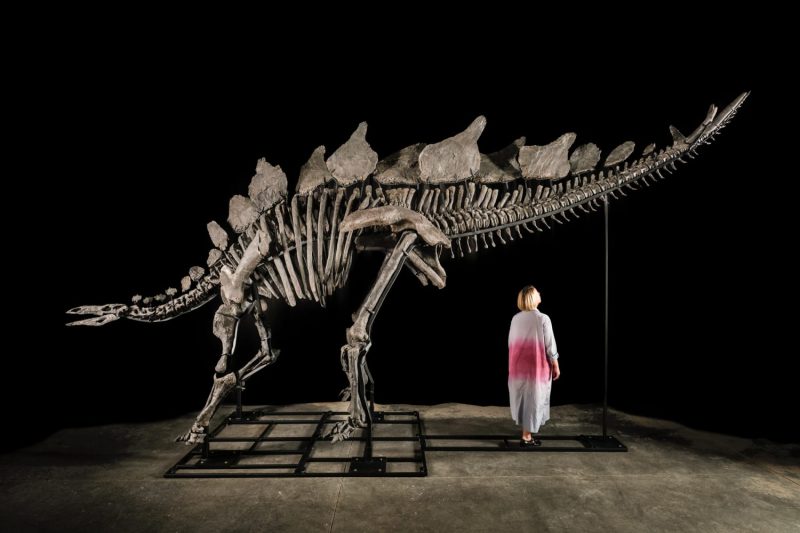Recent news in the world of art and collectibles has left many awe-struck as billionaire Citadel founder Ken Griffin splurged a whopping $45 million on a rare stegosaurus fossil in a record-breaking auction sale. The purchase has stirred discussions and raised eyebrows in the realms of both paleontology and the art world, prompting a closer examination of the significance behind such a remarkable acquisition.
The stegosaurus, a dinosaur that roamed the Earth over 150 million years ago, is a testament to the ancient wonders of our planet’s history. Renowned for its distinctive double row of large bony plates along its back and its spiked tail, the stegosaurus has captured the imagination of both researchers and the general public for generations. The fossil in question is said to be exceptionally well-preserved, providing a rare glimpse into the life and anatomy of this magnificent creature.
Ken Griffin’s decision to invest such a substantial sum in acquiring this stegosaurus fossil raises interesting questions about the intersection of art, science, and wealth. While traditional art forms such as paintings and sculptures have long been the focal point of high-profile auctions, the growing trend of collecting fossils and natural artifacts among the elite is a striking departure from convention. It reflects a broader shift towards appreciating and preserving elements of our natural history that transcend cultural and temporal boundaries.
Beyond the monetary value attached to such a purchase, there is an inherent cultural and educational significance in bringing prehistoric relics into the public eye. Museums and research institutions play a crucial role in studying and preserving these fossils, shedding light on the mysteries of our planet’s past and educating future generations about the rich tapestry of life that once existed on Earth. By acquiring and showcasing such artifacts, individuals like Ken Griffin contribute to the ongoing dialogue between science and society, fostering a deeper understanding of our shared heritage.
However, the commercialization of fossils like the stegosaurus raises ethical concerns regarding the preservation and accessibility of these valuable resources. As demand for such artifacts grows among private collectors, there is a risk that important scientific specimens could be lost to private collections, depriving researchers of crucial data for furthering our understanding of ancient life forms. Striking a balance between commercial interests and scientific stewardship is essential to ensure the integrity and conservation of these priceless artifacts for future generations.
In conclusion, Ken Griffin’s acquisition of a stegosaurus fossil for $45 million serves as a poignant reminder of the enduring allure of ancient relics and the complexities of their conservation and dissemination in a modern world. As we celebrate the marvels of our planet’s past, it is imperative that we approach the custodianship of such treasures with reverence and responsibility, keeping in mind the invaluable contributions they make to our collective knowledge and appreciation of the wonders of nature.
